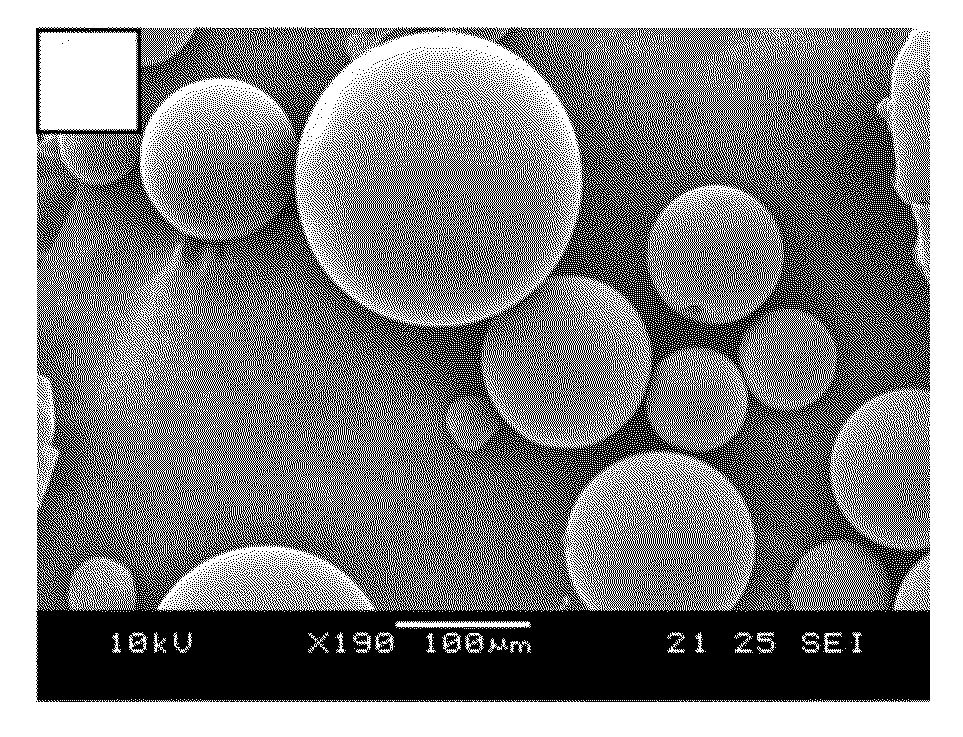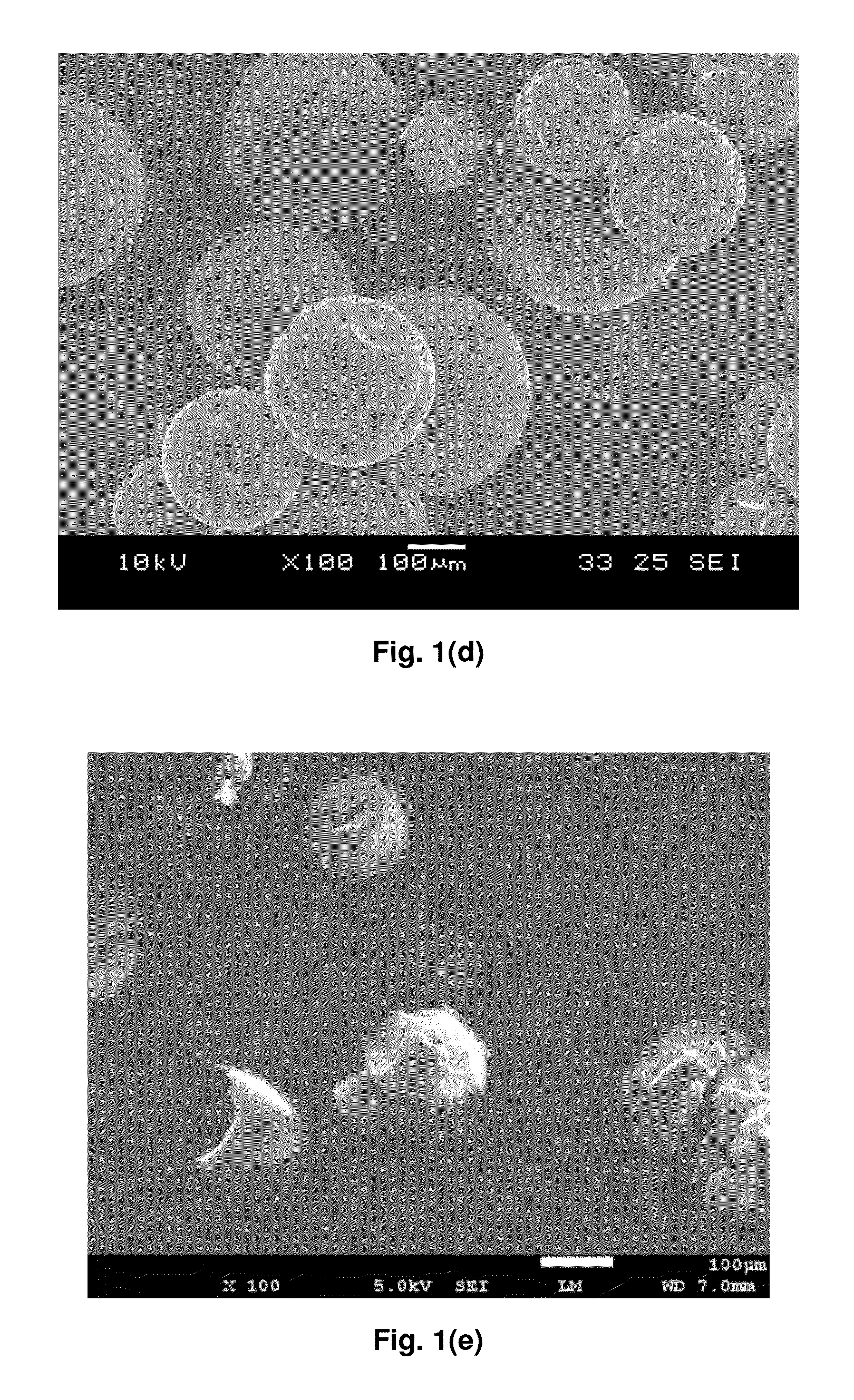Microencapsulation of reactive diisocyanates and the application to self-healing anticorrosion coatings
a diisocyanate and reactive technology, applied in the field of microcapsules and a method of microencapsulation liquid isocyanate, can solve problems such as processing difficulties, and achieve the effect of preventing or lowering the corrosion grad
- Summary
- Abstract
- Description
- Claims
- Application Information
AI Technical Summary
Benefits of technology
Problems solved by technology
Method used
Image
Examples
example 1.1
[0044]Synthesis of encapsulated microcapsules being formed from MDI prepolymer and 1,4-butanediol as polyol: The microcapsules preparation was based on the interfacial polymerization reaction of Suprasec 2644 and 1,4-butanediol in an oil-in-water emulsion system. At room temperature, gum arabic aqueous solution was prepared as surfactant in a 250 ml beaker. The beaker was suspended in a temperature-controlled water bath on a programmable hot plate with an external temperature probe. The solution was agitated with a digital mixer (Caframo) driving a three-bladed propeller. 2.9 g of Suprasec 2644 liquid was mixed well with HDI, and the mixture was then added into the prepared surfactant solution under agitation to develop a stable emulsion system. After the addition, the system was heated to 40° C. at the heating rate of 7° C. min−1, and 3.0 g of 1,4-butanediol, diluted in 3 ml deionized water, was dropwisely added into the emulsion to initiate the interfacial polymerization at the oi...
example 1.2
[0045]Synthesis of encapsulated microcapsules being formed from MDI prepolymer and 1,4-butanediol as polyol: At room temperature, 30 ml of 3 wt. % gum arabic aqueous solution was prepared as surfactant in a 250 ml beaker. The beaker was suspended in a temperature-controlled water bath on a programmable hot plate with an external temperature probe. The solution was agitated with a digital mixer (Caframo) driving a three-bladed propeller. 2.9 g of MDI prepolymer liquid is mixed well with 8.0 g of HDI, and the mixture was then added into the prepared surfactant solution under stirring at 800 RPM to develop an emulsion system. After the addition, the system was heated to 40° C. at the heating rate of 7° C. / min, and 3.0 g of 1,4-butanediol, diluted in 3 ml deionized water, was dropwisely added into the emulsion to initiate interfacial polymerization at the oil / water interface. The reaction was stopped after 60 min, and the resultant microcapsules were filtered and washed with distilled w...
example 1.3
[0046]Synthesis of encapsulated microcapsules being formed from MDI prepolymer and glycerol as polyol: At room temperature, 30 ml of 3 wt % gum arabic aqueous solution was prepared as surfactant in a 100 ml beaker. The beaker was suspended in a temperature-controlled water bath on a programmable hot plate with an external temperature probe. The solution was agitated with a digital mixer (Caframo) driving a three-bladed propeller. 1.74 g of MDI prepolymer liquid was mixed well with 4.8 g of HDI, and the mixture was then added into the prepared surfactant solution under stirring at 800 rpm to develop an emulsion system. After the addition, the system was heated to 40° C. at the heating rate of 7° C. / min, and 1.8 g of glycerol, diluted in 1.8 g deionized water, was dropwisely added into the emulsion to initiate interfacial polymerization at the oil / water interface. The reaction was stopped after 80 min, and the resultant microcapsules were filtered and washed with distilled water for t...
PUM
| Property | Measurement | Unit |
|---|---|---|
| weight loss | aaaaa | aaaaa |
| thickness | aaaaa | aaaaa |
| shell thickness | aaaaa | aaaaa |
Abstract
Description
Claims
Application Information
 Login to View More
Login to View More - R&D
- Intellectual Property
- Life Sciences
- Materials
- Tech Scout
- Unparalleled Data Quality
- Higher Quality Content
- 60% Fewer Hallucinations
Browse by: Latest US Patents, China's latest patents, Technical Efficacy Thesaurus, Application Domain, Technology Topic, Popular Technical Reports.
© 2025 PatSnap. All rights reserved.Legal|Privacy policy|Modern Slavery Act Transparency Statement|Sitemap|About US| Contact US: help@patsnap.com



